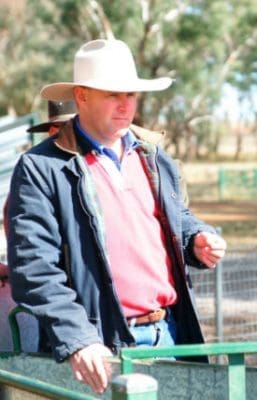
FOR many commercial cattle producers, the decision to purchase new bulls is often influenced by the preference to buy from a particular breeder. There are many reasons for this preference, ranging from long-standing relationships to a desire to access genetics that may not be available elsewhere.
As highlighted in last week’s genetics column, building a strong relationship between bull breeder and purchaser is essential to identifying the right sires for a program.
As an advisor, I am often asked by clients to help find breeders who may have bulls that could suit their program. A common theme in these conversations focusses around the questions commercial producers should ask their bull breeders.
Ahead of this year’s spring bull sales, it may be an opportunity for many producers to reflect on what they know about their bull breeder, and to perhaps ask some questions to underpin their breeding choices.
Q: What are the breeding objectives of your bull breeder?
Understanding the objectives of the bull breeder is a key starting point. Bull breeders should be able to describe the objectives for their herd. This can include the phenotypic performance of their animals, the traits they aim to develop and provide clear results of how well their animals are performing against those traits.
Q: What selection pressure is being placed onto the herd?
Selection pressure is an important process to understand. Selection pressure includes the choice of replacement females. How are they selected by the breeder? What measurements or data are collected to determine that there is genetic progress being made in the female herd? In regard to the selection of sale bulls, how does the bull breeder select the bulls to be offered each year? What performance measures are undertaken? How are the bulls grown and prepared?
Q: What performance data is collected on the herd?
While there are some people who believe they can visually select a ‘good’ bull, it’s actually impossible to see the genetic profile of a bull. Visually assessment is influenced by how a bull as an individual may have been managed to that point. Its appearance is a result of the nutrition and management. That appearance doesn’t mean the bulls progeny will be the same in a different program.
Breeders who collect and submit data for genetic analysis through programs such as BreedPlan are able to offer more certainty in the performance of a bull’s progeny in different herds. However, not all herds have the same amount of commitment to data collection. Greater progress is likely to occur when bulls are selected on high accuracies for traits. It’s worth exploring how much data breeders collect and assessing their herds completeness of recording.
Q: How many reference sires have been used?
It’s not uncommon to find numerous reference sires listed in catalogues or in a bull breeder’s background information. Most bull breeders will look to introduce new sires over time. However, there is a balance between introducing new genetics and backing multiple options. Too many sires may signal a breeder lacks a clear direction for their program, and will potentially have fewer clearly defined objectives for their own herd.
Q: What does the cow herd look like?
Much can be learnt about a program’s direction, the selection pressure placed on females and the overall breeding objective through observing the bull breeder’s own cow herd. The similarity of mature cow size, the selection for phenotype similarity and measurements on fertility can highlight how the traits and areas of importance for the bull breeder.
Ultimately these questions will shape a much better understanding of where a bull breeder is heading. For commercial producers focussed on making genetic gains within their herd, having a close alignment with a breeder and accessing the genetics they are producing is integral to that process.
However, without truly knowing where the direction of a breeder is going, it will restrict the progress that can be made at the commercial level.
Taking the time to ask questions and develop a relationship is therefore as important for the commercial producer as it is for the seedstock producer who supplies the bulls to the industry.

Alastair Rayner
Alastair Rayner is the Principal of RaynerAg, an agricultural advisory service based in NSW. He regularly attends bull sales to support client purchases and undertakes pre sale selections and classifications. He can be contacted here or through his website www.raynerag.com.au
